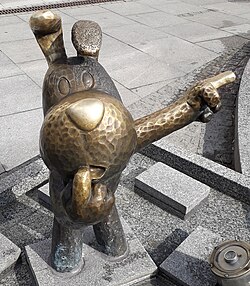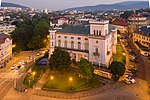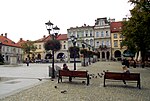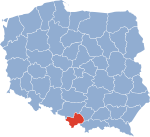Bielsko-Biała Power Plant
Buildings and structures in Bielsko-BiałaCieszyn SilesiaCoal-fired power stations in PolandCogeneration power stations in PolandEnergy infrastructure completed in 1973 ... and 2 more
Energy infrastructure completed in 1997Polish Joint-stock companies

The Bielsko-Biała Power Plant is a complex of coal-fired combined heat and power plants at Czechowice-Dziedzice near Bielsko-Biała, Poland. It has two principal flue gas stacks, 100 metres (330 ft) and 225 metres (738 ft) high, the latter of which is one of the tallest free standing structures in Poland. The complex is operated by Południowy Koncern Energetyczny, a subsidiary of the Tauron Group.
Excerpt from the Wikipedia article Bielsko-Biała Power Plant (License: CC BY-SA 3.0, Authors, Images).Bielsko-Biała Power Plant
Jana Karola Chodkiewicza, Bielsko-Biała Złote Łany
Geographical coordinates (GPS) Address Nearby Places Show on map
Geographical coordinates (GPS)
| Latitude | Longitude |
|---|---|
| N 49.812 ° | E 19.052 ° |
Address
Jana Karola Chodkiewicza
43-300 Bielsko-Biała, Złote Łany
Poland
Open on Google Maps










